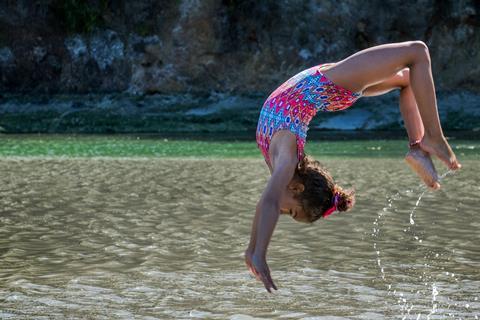AMI One Health Advisory Group member Elitsa Penkova delves into the growing antimicrobial resistance threat facing wild swimmers connecting with nature in rivers and lakes.
Wild swimming in freshwater environments is one of life’s simple pleasures. It connects us with nature and provides respite from the hustle and bustle of daily life. Yet, beneath the surface of these seemingly pristine waters, a hidden danger lurks. Antibiotic-resistant bacteria, often dubbed as ‘superbugs’, have found a home in these environments, posing a threat to those who take the plunge.

The convergence of nature and human activity in these aquatic landscapes has created an ideal breeding ground for superbugs. Once treatable, bacteria can now withstand antibiotics. The overuse and misuse of antibiotics have accelerated this process, leaving us vulnerable to infections that we expect to be easily treatable.
The association between superbugs and hospitals or livestock farming has been well-documented, but the link between recreational swimming and antibiotic resistance is an emerging concern, as research shows that people are at risk of encountering these drug-resistant microbes.
Path to waterways
The path of superbugs to our waterways is complex. Firstly, riverine bacteria, usually harmless to humans, can harbour resistance mechanisms. Studies have shown that some human pathogens carry resistance mechanisms originating from environmental bacteria.
Secondly, antibiotic-resistant bacteria are consistently introduced into our river systems through sewage and agricultural runoff. Thirdly, our own bodies contribute to this issue. Whenever we take a course of antibiotics or excrete waste, we inadvertently release microbes, along with substances that further fuel the evolution of resistance, thus perpetuating the cycle.
The consequences of superbug exposure can be severe. Illnesses caused by antibiotic-resistant bacteria are notoriously difficult to treat and can lead to extended hospital stays, use of more potent medications, and even fatalities. And while the risk of encountering these pathogens in recreational waters is often overlooked, it’s a risk that shouldn’t be taken lightly.
Precautions and responsibilities
Swimmers must take precautions, such as avoiding immersion in waters near sewage discharge points, practicing good hygiene, and not consuming water from rivers, or other freshwater environments.
However, understanding this issue doesn’t rest solely on swimmers’ shoulders. Communities, governments, and researchers must also take action.
First, we need better monitoring of water quality. Increased surveillance can help identify potential contamination sources, enabling us to take preventive measures. The collaboration of citizen scientists, as seen with groups like the ‘Ilkley Clean River Group’ or ‘Friends of the River Dart’ is a promising step in this direction.
Upstream issues
Second, we should focus on reducing the overuse of antibiotics and improve waste treatment facilities to prevent these drugs and resistant bacteria from entering our waterways.
Finally, educating the public about the risks and prevention measures is paramount. The responsibility of safeguarding our health and the environment falls on our collective shoulders.
A wild swim does awaken the senses and offers an escape from the demands of everyday existence. But let’s not forget that nature is not as pristine as it once was. It is important that we tread carefully and respect these ecosystems, recognising the hidden threat of antibiotic-resistant bacteria beneath the surface. In doing so, we can enjoy the great outdoors and ensure our beloved swimming spots remain safe for longer.







No comments yet